Figures & data
Figure 1 Age-standardized incidence rate (per 1000 person-years) of infectious disease episodesa with hospital contacts among children aged 0–14 years by epidemiological year (2008/2009‒2016/2017), country and type of hospital contact. aHospital contacts with infections, which occur less than 14 days after discharge/visit date of a previous contact with infection are defined as the same infectious disease episode.
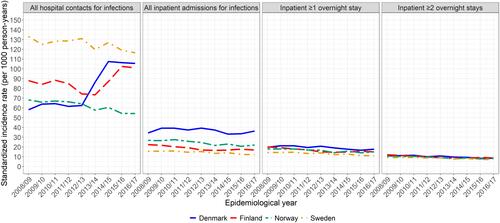
Figure 2 Incidence rate (per 1000 person-years) of infectious disease hospital episodesa for epidemiological years 2008/2009‒2016/2017, by age, country, and type of hospital contact. aHospital contacts with infections, which occur less than 14 days after discharge/visit date of a previous contact with infection are defined as the same infectious disease episode.
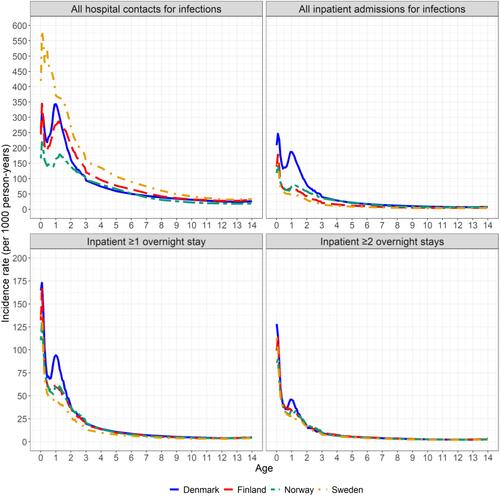
Figure 3 Age-standardized incidence rate (per 1000 person-years) of infectious disease hospital contactsa among children aged 0–14 years by group of infectionb, epidemiological year (2008/2009‒2016/2017), country and type of hospital contact. aHospital contacts with infections, which occur less than 14 days after discharge/visit date of a previous contact with infection are defined as the same infectious disease episode. bDifferent types of infections within an infectious disease hospital episode are counted, thus summing the rates over types of infections will give greater rate, than the rates presented in .
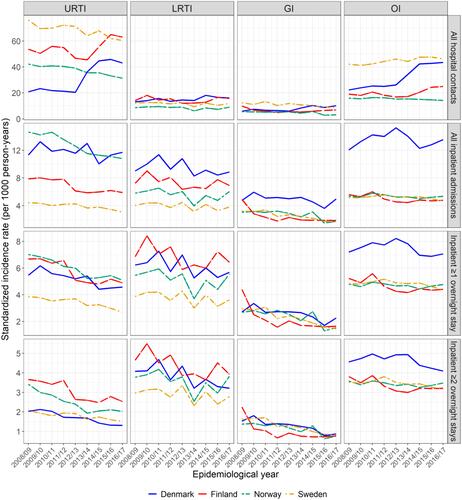
Figure 4 Incidence rate (per 1000 person-years) of inpatient contacts with minimum 1 overnight stay for epidemiological years 2008/2009‒2016/2017 by group of infectiona, age, and country. aDifferent types of infections within an infectious disease hospital episode are all counted toward that type of infections (eg if both ICD-10 codes for GI and LRTI is registered during an infectious disease hospital episode the contact is counted both as GI and LRTI), thus summing the rates over types of infections will give greater rates, than the rates presented in .
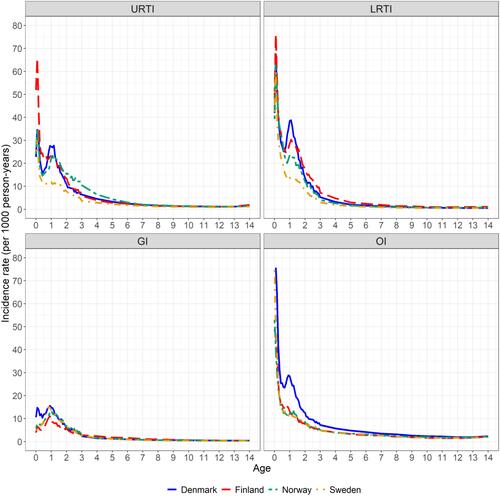
Figure 5 Incidence rate (per 1000 person-years) of infectious disease inpatient hospital episodesa with minimum 1 overnight stay for epidemiological years 2008/2009‒2016/2017 by age, sex, and country. aHospital contacts with infections, which occur less than 14 days after discharge/visit date of a previous contact with infection are defined as the same infectious disease episode.
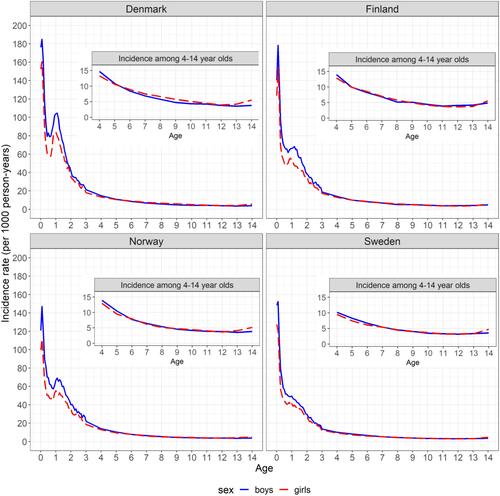
Table 1 Distribution of the Most Common Subgroups of Infections for Inpatient Hospital Episodes with at Least One Overnight Stay, by Group of Infection and Country
